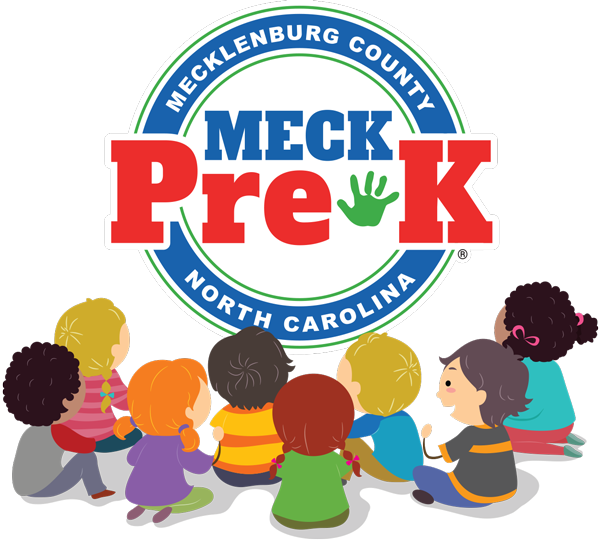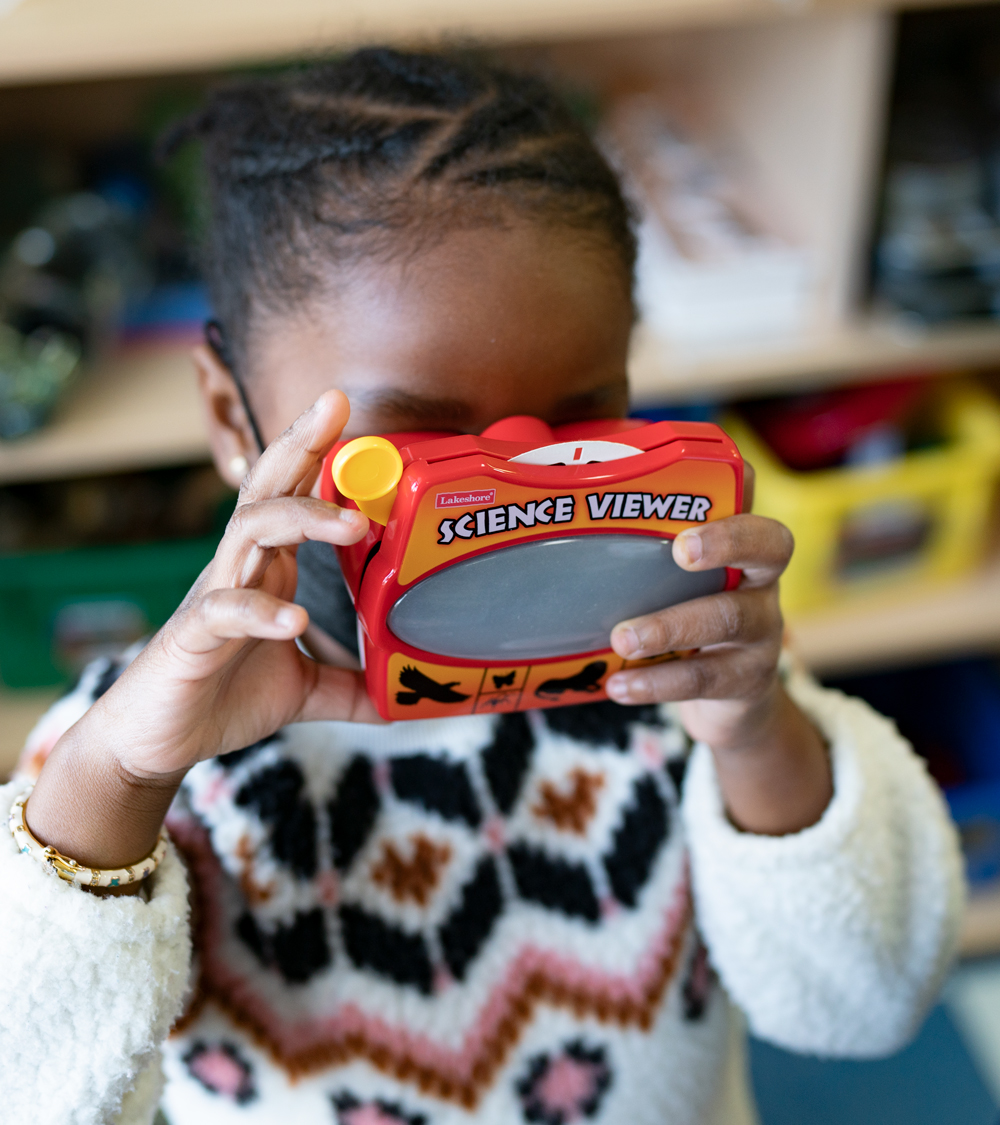A Pre-K Education Starts With the Right Curriculum
The key difference between pre-k and daycare is the pre-K curriculum. A curriculum is what educators intend to teach their students over the course of a semester or school year. A pre-k curriculum should encourage learning and growth in a number of areas to prepare children for kindergarten. This includes their literacy abilities, social skills, attitude toward learning, and much more.
What Should Pre-K Curriculum Include?
To create a curriculum for pre-k program, it’s essential to cover foundational topics that challenge them academically, socially, and creatively. Here are a few subjects and skills included in every great pre-k curriculum.
Language and Literacy Abilities
Language and literacy abilities are critical to a child’s success in kindergarten. That’s why every pre-k curriculum should devote time to helping children grow and improve their skills in this area by:
- Recognizing and naming all uppercase letters and some lowercase.
- Developing a connection between sounds and letters.
- Practicing writing out their first name and other important words.
- Growing their vocabulary and conversational abilities.
Mathematical and Scientific Thinking
Needless to say, a curriculum for four-year-olds doesn’t need to include complex mathematics. However, pre-K is a great time to teach children introductory mathematical skills. This includes:
- Identifying numerals to 10 or more.
- Counting objects to 10 or more.
- Identifying patterns and sizes (small, medium, large).
- Learning shapes (circle, triangle, rectangle, etc.).
This same approach is taken with regard to science. Kids as young as 4 can begin thinking scientifically with a pre-K curriculum that encourages them to:
- Observe weather, insects, and plant life.
- Learn about animals and their habitats.
- Explore tools like magnifying glasses and magnets.
- Identify and use their five senses.
Creative Activities
No pre-K curriculum is complete without creative subjects and activities. Creative pursuits encourage children to express themselves and to use their imaginations. Pre-K could be where children first discover their passions for things like music or painting. Every great pre-k curriculum should include some combination of:
- Painting and drawing with various art materials (crayons, colored pencils, markers, watercolor paint, etc.)
- Acting out plays.
- Storytelling.
- Singing songs and/or using children’s instruments (rhythm sticks, bean bags, etc.).
- Movement and dance.
Sharing and Socializing
Before starting kindergarten, children need to have practiced and developed their social skills. This will help them make friends and collaborate with classmates in the years to come. A great educator will find ways of including opportunities to develop these skills in the curriculum. This could include:
- Having children work in groups.
- Practicing manners.
- Free playtime.
- Encouraging problem-solving.
- Sharing toys and class materials.
Pre-K has the power to inspire in children a positive mindset and attitude towards learning. This is made possible by the educator’s enthusiasm, the classroom environment, and the use of a Creative Curriculum.
What Is a Creative Curriculum in Early Childhood Education?
Teachers plan opportunities for children to satisfy their innate curiosity by investigating interesting topics in developmentally appropriate ways. This curriculum not only covers essential content, but also pushes children to be independent learners by using a project-based approach. This school year students will investigate:
- Building a classroom community. Students will learn how to be a part of a classroom community, make friends, rules & routines, and how to care for the classroom and it’s materials
- Trees. In this study, children will expand their knowledge of trees through a variety of hands on experiences that support all areas of their learning and development. They will develop an understanding of the characteristics of different kinds of trees, how trees grow and change, and why trees are important to people and the environment. They will also meet interesting people from the community who work with trees.
- Buildings. In this study, children will expand their knowledge of buildings through a variety of firsthand experiences that support all areas of their learning and development. They will compare different structures and their characteristics, discover how people construct and use buildings, and design and create their own model building and communities. They will also meet interesting people from the community who construct or work with building.
- Clothing. In this study, children will deepen their understanding of clothing through a variety of firsthand experiences that support all areas of their learning and development. Through these investigations, children will discover different types of clothing, how people care for clothing, where people get their clothing, and how to design and create their own clothing. Children also will meet members of their community who work with clothing in different ways.
- Balls. Children will learn how natural forces such as gravity and friction affect how balls move. They also learn how to make balls, marbles, and other rolling objects change speed and direction.
- Water. In this study, children will explore a variety of questions and concepts through experiences that support all areas of development and learning. They will discover the importance of water and its many uses at school and at home. They will investigate how water changes, and learn about how water helps people and the environment. Through these investigations, children will find sources of water around the school and learn how water is used at each; explore how water is used to clean, create, and play; conduct experiments on how water changes from liquid to gas, liquid to solid, and solid to liquid; learn the importance of water conservation; and meet interesting people who work with water in the community.
- Recycling. In this study, children will deepen their understanding of ways to reduce, reuse, and recycle items they use through a variety of hands-on experiences that support all areas of their development and learning. Through these investigations, children will observe, gather data, explore their community, interview an expert, learn new information, and propose solutions to problems.
- Insects. Children will explore different types of insects and investigate the characteristics of insects, how they work together, how they keep themselves safe, and how they help the environment. They will gather data, meet interesting people who work with insects, explore a variety of materials used to examine insects, and create their own guide to the insects in their community.
- Getting ready for Kindergarten. During the last weeks of school, children will prepare for the end of Pre-K and the transition to Kindergarten. Teachers will guide children through the process of reflecting on what they’ve learned, celebrating their achievements, and sharing their experiences with families and friends.
Students will also gain knowledge in alphabets, name writing, phonological awareness, and math during interest area time, transitions (mighty minutes), small groups, and large group time.
What Should a Pre-K Classroom Look Like?
For a curriculum to be taught effectively, educators need a pre-K classroom with all the proper resources. A great pre-K classroom should be hygienic, pristine, and spacious enough for children to move, play, learn, and socialize. The classroom should also have plenty of books, craft materials, and toys that educate and spark the imagination of young children.
Another key feature of an excellent pre-K classroom is a good student-to-educator ratio. If there are too many children in one classroom, some children may not get the specialized attention they need to grasp the curriculum. A good example of proper class size can be found at MECK Pre-K. At MECK Pre-K, each class has one teacher, one teaching assistant, and a maximum of 18 children.
Why Does a Pre-K Curriculum Matter?
A great pre-K curriculum doesn’t focus solely on the basics of different subjects. It also encourages children to be independent, social, creative, and curious. It’s this curriculum that sets children up for success in their academic journey ahead. Without it, a pre-K program is more similar to a daycare.
MECK Pre-K’s Curriculum Has It All
Looking for a free pre-K program that offers the curriculum described above? If you currently live in Mecklenburg County, you may be eligible for the MECK Pre-K program! This excellent pre-k program offers an emergent curriculum that inspires a joy for learning while preparing your child for kindergarten.
If your child is turning 4 before August 31 of this year, you can begin the MECK Pre-K enrollment process online today. This program is accessible to all families regardless of income level. If you have any questions about the MECK Pre-K program, our curriculum, or anything else, please don’t hesitate to contact us or check out the informative FAQs on our website.

